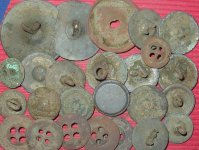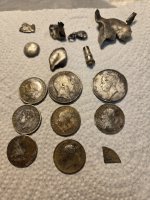Truth
Gold Member
I hunt in public places with all history which has the good stuff deeper than the trash that lays a couple of inches higher and so far I’ve realized that the 4 kHz rings up hi VDI’s on trash weather it be aluminum or nails. Is that program for permission on private property with less trash? If there is a tip or trick that makes sense of these high VDI numbers please let me know. I appreciate it Merry Christmas to all






